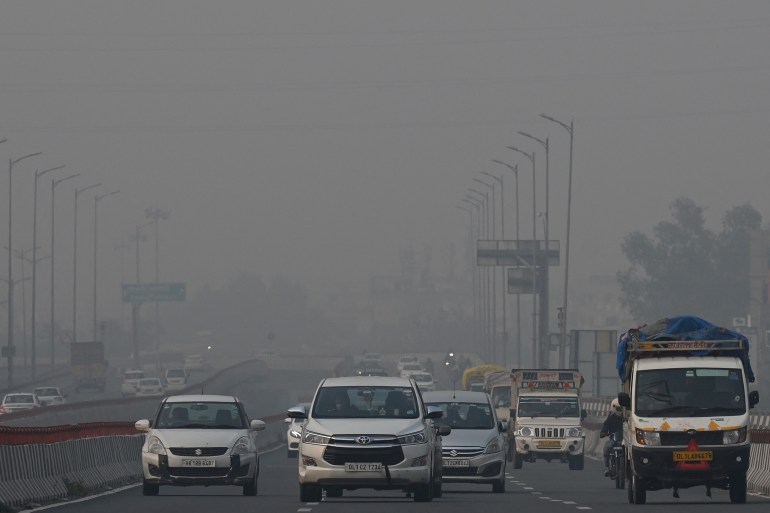Delhi shuts schools as it mulls ‘pollution lockdown’
Indian capital’s poor air quality would likely run until at least November 18 due to ‘low winds’.

Authorities in India’s capital, New Delhi, have announced a one-week closure of schools and said they would consider a “pollution lockdown” to protect citizens from worsening levels of toxic smog.
“Schools will be shut so that children don’t have to breathe polluted air,” Chief Minister Arvind Kejriwal told reporters on Saturday, adding that construction activity would also be halted for four days.
Keep reading
list of 3 itemsWhy air quality has deteriorated sharply in India’s capital
Toxic foam blankets India’s sacred Yamuna river
Government offices were asked to operate from home and private businesses were advised to stick to work-from-home options as much as possible.
The city is ranked one of the world’s most polluted, with a hazardous melange of factory and vehicle emissions, as well as smoke from agricultural fires, settling in the skies over its 20 million people each winter.
On Saturday, the Supreme Court suggested imposing a lockdown on Delhi to combat the air quality crisis. “How will we live otherwise?” Chief Justice N.V. Ramana said.
Kejriwal said his government would consider the court’s suggestion after consulting with stakeholders.
“Pollution lockdown has never happened before. It will be an extreme step,” he said.
The Central Pollution Control Board on Friday advised authorities to prepare “for implementation of measures under ’emergency’ category”.
It added the poor air quality would likely run until at least November 18 due to “low winds with calm conditions during the night”.
On Saturday, levels of PM 2.5 particles – the smallest and most harmful, which can enter the bloodstream – topped 300 on the air quality index.
That is 20 times the maximum daily limit recommended by the World Health Organization.
Al Jazeera’s Pavni Mittal, reporting from New Delhi, said people in the city had been “waking up to thick smog” for more than a week now.
“Visibility has been low and the situation gets so bad, there are times in the day you can actually taste the pollution,” she added.
“The situation gets especially bad during this time of the year,” Mittal explained, citing the onset of winter and the rise in farm fires in neighbouring states, among other reasons.
Delhi’s government has been promising for years to clean up the city’s air.
The burning of agricultural waste in Delhi’s neighbouring states – a major contributor to the city’s pollution levels every winter – has continued despite a Supreme Court ban.
Tens of thousands of farmers around the capital burn their stubble – or crop residue – at the start of every winter, clearing fields from recently harvested paddies to make way for wheat.
The number of farm fires this season has been the highest in the past four years, according to government data.
Earlier this year, the Delhi government opened its first “smog tower” containing 40 giant fans that pump 1,000 cubic metres of air per second through filters.
The $2m installation halves the number of harmful particulates in the air but only within a radius of one square kilometre (0.4 square miles), according to engineers.
A 2020 report by Swiss organisation IQAir found that 22 of the world’s 30 most polluted cities were in India, with Delhi ranked the most polluted capital globally.
